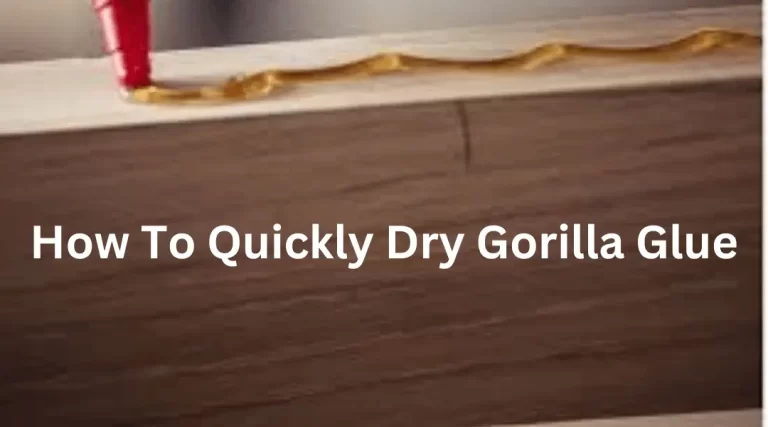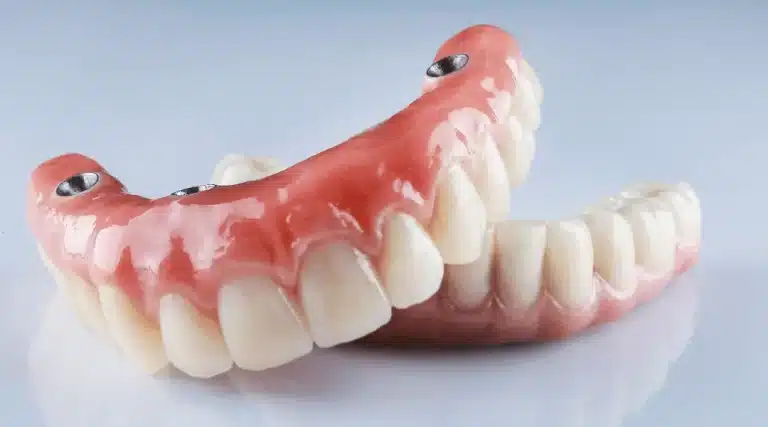The installation of vinyl plank flooring has become increasingly popular over the years due to its versatility, durability, and affordability. However, the success of the installation largely depends on the adhesive used. Choosing the right glue is crucial to ensure that the vinyl planks remain firmly in place, withstand wear and tear, and maintain their appearance over time.
While there are many types of glue available in the market, not all of them are suitable for vinyl plank flooring. The wrong glue can lead to a host of problems such as curling, lifting, and gaps between planks. Therefore, it is important to understand the factors that affect the choice of glue and the recommended options.
This article will provide a comprehensive guide on the recommended glues for successful installation of vinyl plank flooring, taking into account the type of subfloor, the environment, and the manufacturer’s recommendations. By following these guidelines, readers can achieve a flawless installation and enjoy the benefits of vinyl plank flooring for years to come.
Understand the Importance of Choosing the Right Glue
The selection of an appropriate adhesive compound is fundamental in ensuring the longevity and stability of the flooring system, thus highlighting the crucial significance of choosing the right glue.
The importance of proper adhesive selection cannot be overstated as it directly impacts the overall performance of your vinyl plank flooring installation.
Factors affecting adhesive performance include the type of subfloor, moisture level, and temperature.
It is essential to understand the properties of each adhesive option available and to select the one that best suits the specific needs of your installation.
Consider the type of subfloor you have, as it can significantly affect the adhesive’s performance.
It is crucial to ensure that the adhesive is compatible with the subfloor type to prevent any issues that may arise in the future.
Consider the Type of Subfloor You Have
When it comes to installing vinyl plank flooring, the type of subfloor you have is a crucial factor to consider, as it can greatly affect the quality and longevity of your flooring.
Moisture concerns are particularly important when choosing the right glue, as any moisture trapped between the subfloor and the vinyl planks can cause the adhesive to degrade over time.
Surface preparation is also key, as the subfloor must be clean, dry, and free of any debris or imperfections that may prevent the glue from adhering properly.
Depending on the type of subfloor you have, different glues may be recommended. For example, a plywood subfloor may require a different adhesive than a concrete subfloor.
It is important to carefully consider the manufacturer’s recommendations and consult with professionals if needed to ensure that the right glue is chosen for your particular subfloor.
With proper subfloor preparation and the right adhesive, vinyl plank flooring can provide a durable, long-lasting flooring solution for a variety of environments.
As we move on to determining the environment, it is important to keep in mind the importance of choosing the right glue and subfloor preparation.
Determine the Environment
Assessing the environmental conditions in which the flooring will be installed is a crucial step in ensuring the longevity and resilience of the flooring, much like how a doctor would examine a patient’s overall health before prescribing treatment. When it comes to vinyl plank flooring, moisture and temperature are two of the most important environmental factors to consider.
Here are four things to keep in mind when assessing the environment:
1) Assess the humidity levels in the room where the flooring will be installed. If the humidity levels are too high, it may cause the flooring to expand and contract, leading to damage over time.
2) Determine if the room will be exposed to direct sunlight or extreme temperature changes. Vinyl plank flooring can become brittle in extreme temperatures, so it’s important to choose a glue that can adapt to temperature changes.
3) Consider the ventilation in the room. If ventilation is poor, it may take longer for the glue to dry, which can lead to issues down the line.
4) Assess the subfloor to ensure it’s dry and free of any debris that can affect the adhesive bond.
By taking these factors into consideration, you can choose the right glue for your vinyl plank flooring installation, ensuring that it will last for years to come. Reviewing the manufacturer’s recommendations is also important to ensure that you are using the correct glue for your specific flooring.
Review the Manufacturer’s Recommendations
Familiarizing oneself with the manufacturer’s instructions is an integral step in ensuring that the installation process of vinyl plank flooring is executed to the highest standard, thereby promoting its longevity and resilience.
The manufacturer’s recommendations should be reviewed thoroughly to ensure that the adhesive selected is compatible with the vinyl plank flooring. Using an incompatible adhesive can cause the flooring to fail, which can lead to costly repairs or replacements.
Manufacturers provide information on the preferred adhesives for their products, including the type and application method. It is essential to follow these recommendations to guarantee the adhesive’s effectiveness and durability.
Understanding the manufacturer’s instructions and glue compatibility is a crucial aspect of the installation process. This knowledge will help ensure that the vinyl plank flooring is installed correctly and will last for years to come.
The next section will delve into how to choose the right type of glue.
Choose the Right Type of Glue
When it comes to choosing the right type of glue for your vinyl plank flooring installation, two primary options are Pressure-Sensitive Adhesive (PSA) and Hard-Set Adhesive.
PSA is a popular choice for its ease of use and versatility, as it can be applied directly to the subfloor and does not require spreading or rolling.
Hard-Set Adhesive, on the other hand, provides a more permanent bond and is recommended for high-traffic areas or commercial settings.
Pressure-Sensitive Adhesive (PSA)
Pressure-sensitive adhesive (PSA) is a type of glue commonly used in the flooring industry due to its ease of use and ability to bond quickly to various surfaces, as demonstrated by a recent study comparing the effectiveness of PSA to other types of adhesives.
The advantages of using PSA for vinyl plank flooring include its ability to be installed directly onto the subfloor without the need for additional preparation, such as sanding or priming, which can save time and money.
PSA also provides a strong bond that can withstand heavy foot traffic and is resistant to moisture, making it ideal for areas prone to spills or humidity.
Additionally, PSA is a low-VOC adhesive, which means it emits fewer harmful chemicals than other types of adhesives, making it a safer choice for indoor air quality.
However, there are alternatives to PSA for vinyl plank flooring, such as hard-set adhesive, which requires more preparation but provides a stronger bond and is better suited for high-traffic areas.
In the next section, we will discuss the benefits and considerations of using hard-set adhesive for vinyl plank flooring.
Hard-Set Adhesive
The use of hard-set adhesive for bonding surfaces offers distinct advantages and considerations that should be taken into account when selecting an appropriate adhesive for specific flooring applications. Unlike PSA, hard-set adhesive is a more permanent solution that creates a strong and durable bond between the flooring and the subfloor.
However, the installation process can be more complex, and it requires a longer drying time. It is essential to follow the application process carefully, ensuring that the adhesive is spread evenly, and to allow sufficient drying time before laying the planks.
Applying the glue correctly is crucial for a successful installation, and it is recommended to seek professional assistance if you are not confident in your abilities.
In the next section, we will discuss how to apply the glue correctly, ensuring that your vinyl plank flooring is installed correctly and securely.
Apply the Glue Correctly
Properly applying the adhesive is pivotal in ensuring a precise and permanent placement of the vinyl planks. To achieve a successful installation, it is important to follow the manufacturer’s guidelines for spreading the adhesive.
Improper spreading can result in unevenness and bubbles, leading to an unattractive and unstable floor. Additionally, allowing the adhesive to dry for the recommended amount of time is crucial for the planks to bond correctly. Rushing this step can cause the planks to shift or lift, resulting in a flawed finish.
When applying the glue, it is essential to use the right tools, including a trowel, roller, and notched trowel, to ensure even coverage. Lastly, avoid over-applying the adhesive, as it can seep through the seams and cause unsightly marks on the surface.
By following these tips, you can guarantee a precise and long-lasting installation of your vinyl plank flooring. To ensure a flawless installation, it is essential to take the time to prepare your subfloor correctly.
Ensure a Flawless Installation
Achieving a precise and long-lasting installation of your vinyl plank flooring requires careful preparation of the subfloor and following manufacturer guidelines for spreading adhesive and allowing adequate drying time.
One of the common mistakes that people make during the installation process is not properly preparing the subfloor, which can lead to uneven flooring and poor adhesion. Before applying any glue, you should ensure that the subfloor is clean, dry, and level. Any bumps or indentations should be sanded down or filled to create a smooth surface. Additionally, troubleshooting tips such as checking the moisture levels of the subfloor and using a moisture barrier can prevent issues with adhesion or warping.
It is also essential to follow the manufacturer’s guidelines for spreading the adhesive and allowing adequate drying time. Rushing the process can result in bubbles, wrinkles, or gaps between the planks.
By taking the time to properly prepare the subfloor and following the guidelines for applying the adhesive, you can ensure a flawless installation of your vinyl plank flooring.
Conclusion
Choosing the right glue is essential for a successful installation of vinyl plank flooring. The type of subfloor, environment, and manufacturer’s recommendations must be taken into consideration before selecting the appropriate glue. Applying the glue correctly is crucial to ensure a flawless installation.
It is important to understand the importance of choosing the right glue for vinyl plank flooring. The wrong type of glue can cause the planks to separate, buckle, or warp, leading to costly repairs. Consider the type of subfloor you have, whether it is concrete or wood, and the environment, such as high humidity or temperature fluctuations. Review the manufacturer’s recommendations to ensure the chosen glue is compatible with the vinyl plank flooring.
Choosing the right type of glue is crucial for a successful installation. Acrylic-based glue is recommended for concrete subfloors, while solvent-based glue is suitable for wood subfloors. Apply the glue correctly, using the recommended amount and spread rate, and allow sufficient time for the glue to dry before installing the planks.
A flawless installation can be achieved by following these guidelines and ensuring the glue is appropriate for the subfloor and environment.
In conclusion, selecting the right glue for vinyl plank flooring is crucial for a successful installation. Taking into consideration the type of subfloor, environment, and manufacturer’s recommendations, and choosing the appropriate glue is essential. Applying the glue correctly and allowing sufficient drying time will ensure a flawless installation. Remember, using the wrong glue is like using a hammer to screw in a nail; it will not work and can lead to costly damage.




